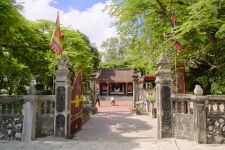
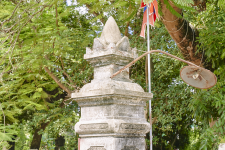
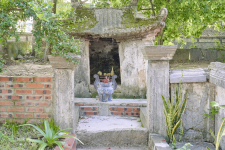
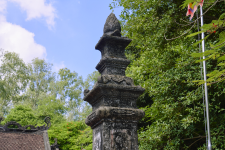
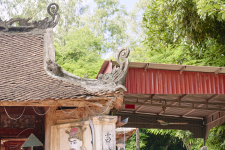
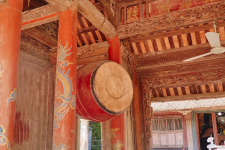
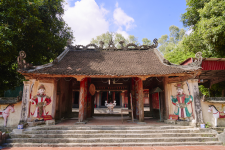

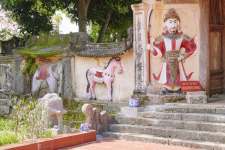
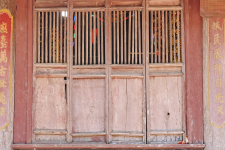
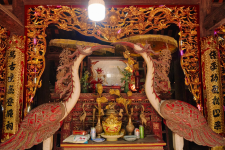
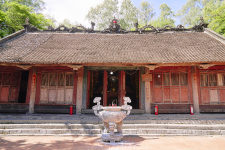
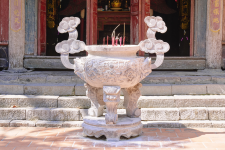
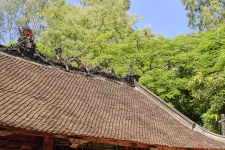
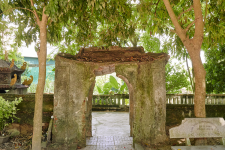
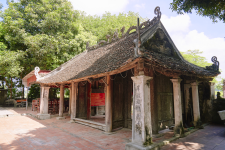
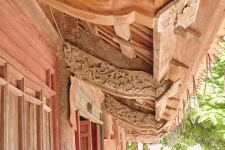

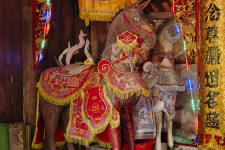
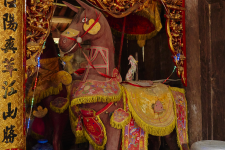
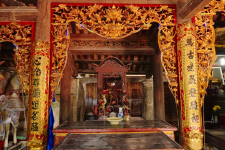
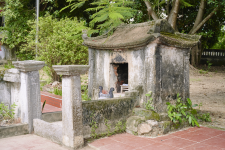
Camera tour
Price: Free
Time to visit a place: 120 phút
Open Time: 7:00 AM - Close Time: 6:00 PM
Address: Quynh Xuan Sub-district, Hoang Mai Town, Nghe An Province
QUYNH TU TEMPLE - HOANG MAI TOWN
Quynh Tu Temple in Quynh Xuan Ward, Hoang Mai Town, Nghe An Province, is the place to worship the gods: Phung Hung, Princess Phuong Dung, Princess Bach Y and Princess Uyen Hoa. People in the area used to call the relic as Phung Hung Temple.
Phung Hung was born and raised in a family of many generations of mandarins in Duong Lam province, who has extraordinary health "bài ngưu, bác hổ". Growing up in the situation that the country was under the domination of the Duong Dynasty, hating the harsh rule of the Northern feudalism, Phung Hung and his younger brother named Phung Hai initiated and mobilized the masses to rise up against the government. After many years of building and developing forces, the Phung Hung uprising achieved many victories, capturing the whole Tong Binh citadel, forcing the enemy to surrender. After capturing Tong Binh citadel, Phung Hung reorganized the social system, wishing to build a long-term autonomous government for the country. However, when the career of national construction was not long, Phung Hung fell seriously ill and died in 773, the achievements of the uprising were quickly annihilated due to internal conflicts, but the spirit of independence, self-reliance and national consciousness of our people was increasingly consolidated. In order to commemorate the national hero who devoted his life to the cause of struggle for national independence and self-determination, people have built temples to him in many places, including Nghe An.
According to legend, Princess Bach Y was the daughter of King Ho Quy Ly. When serving her father's orders to encourage the people to dig the canal, she witnessed their misery and misery, so she devised a plan to trick her father by dropping the May Cho tree into the source of the canal, making the water dye red. and told him that it was because the people had to dig the dragon's neck, so they couldn't finish digging the canal. When the incident was discovered, Princess Bach Y was killed. Merciful for her unjust death, the people built a temple. In the past, Princess Bach Y was worshiped at Quynh Tan temple, but since the temple was demolished, people had carried the deity's tablet to worship at Quynh Tu temple..
Quynh Tu temple relic was built in the Le Dynasty, underwent many times of restoration and embellishment, now it has the architecture of the Nguyen Dynasty. The relic has a total area of 1,800m2 with construction items: three gates, rituals, lower hall, middle hall, upper hall, surrounded by a wall system built and assembled with stone. Layout of the relic site is in the shape of the letter "Tam", the main items are connected in the architecturalstyle of "double house with two roofs on one background" and tend to gradually increase from the outside to the inside. The main architectural items are mainly made of ironwood, jackfruit, and Magnolia, roofed with yin yang tiles.
The middle and upper halls have simpler architecture, less ornate details. Meanwhile, the lower hall has 5 compartments, built earlier than the middle and upper hall, some beautiful architectural decoration details in the ministries because of the image of tiger face and phoenix. The shaping details of sculptures and carvings are elaborated with sharp, neat, delicate and skillful lines. The most unique feature in the architecture of Quynh Tu temple is the ritual gate. Temple's ritual gate has a relatively large scale, including 3 compartments and 2 acts, the structure of a variant of the set of horizontal trusses and rafter bars. The ritual gate's architectural details are elaborately carved and have high artistic value. The theme of sculptural decoration is still dragon, unicorn, turtle, phoenix, phoenix holding the letter, two dragons adoring the moon ... according to the traditional motif but showing a very delicate and skillful expression, helping the project to have both use value and high aesthetic value. At the relic, there are still many artifacts of historical value such as stone elephants, dragon palanquins, wooden horses, etc., and many documents of historical value such as ordination, divine genealogy, etc.
With unique historical and architectural values, Quynh Tu Temple relic was ranked as a national historical, cultural, architectural and artistic relic in Decision No. 351/ Decision on February 15, 1992 by Ministry of Culture, Information and Sports.
Distance: 1.88 km
Distance: 3.09 km
Distance: 4.21 km
Distance: 7.48 km
Distance: 7.48 km
Distance: 8.30 km
Distance: 8.56 km
Distance: 8.72 km
Distance: 9.91 km
Distance: 10.29 km
Distance: 10.42 km
Distance: 11.06 km
Distance: 4.62 km
Distance: 4.63 km
Distance: 4.74 km
Distance: 5.70 km
Distance: 8.62 km
Distance: 8.70 km
Distance: 8.85 km
Distance: 9.66 km
Distance: 9.98 km
Distance: 10.18 km
Distance: 12.26 km
Distance: 19.13 km
Distance: 19.49 km
Distance: 0 m
Distance: 1.99 km
Distance: 2.92 km
Distance: 5.03 km
Distance: 5.03 km
Distance: 5.12 km
Distance: 5.32 km
Distance: 5.50 km
Distance: 5.50 km
Distance: 5.65 km
Distance: 6.61 km
Distance: 6.82 km
Distance: 6.96 km
Distance: 7.08 km
Distance: 7.14 km
Distance: 7.42 km
Distance: 8.50 km
Distance: 8.79 km
Distance: 5.03 km
Distance: 5.92 km
Distance: 6.44 km
Distance: 10.29 km
Distance: 10.30 km
Distance: 10.81 km
Distance: 11.27 km




0
No Comment!